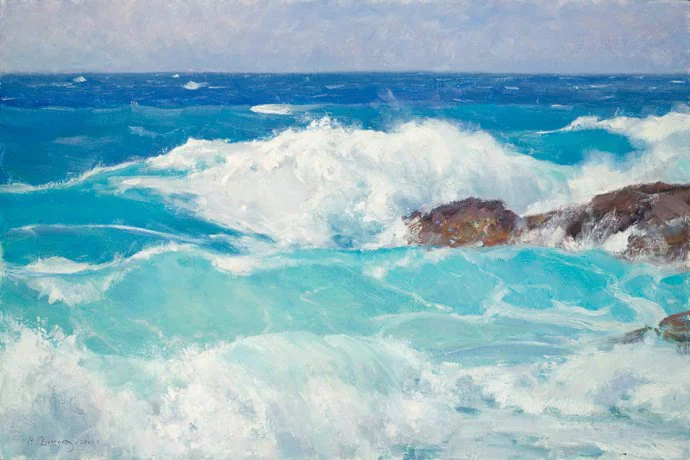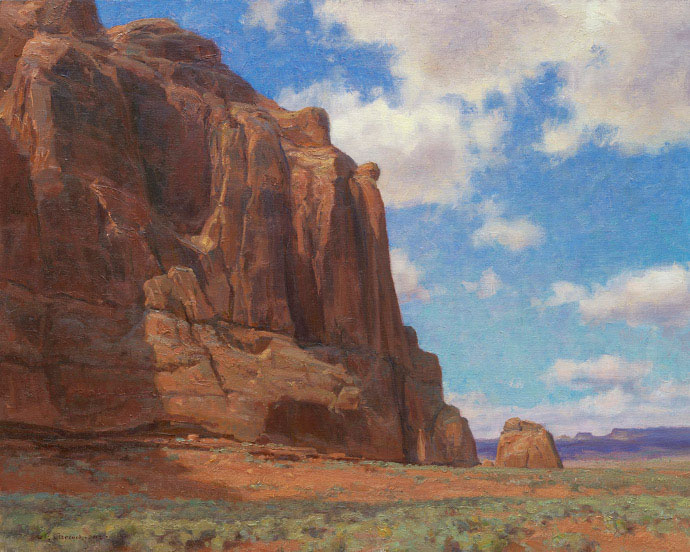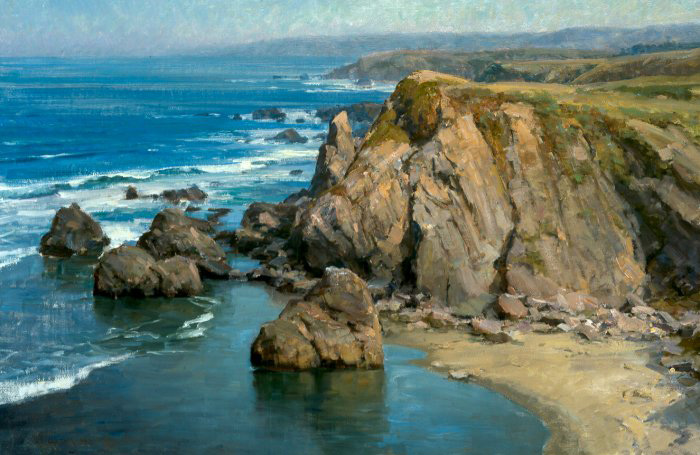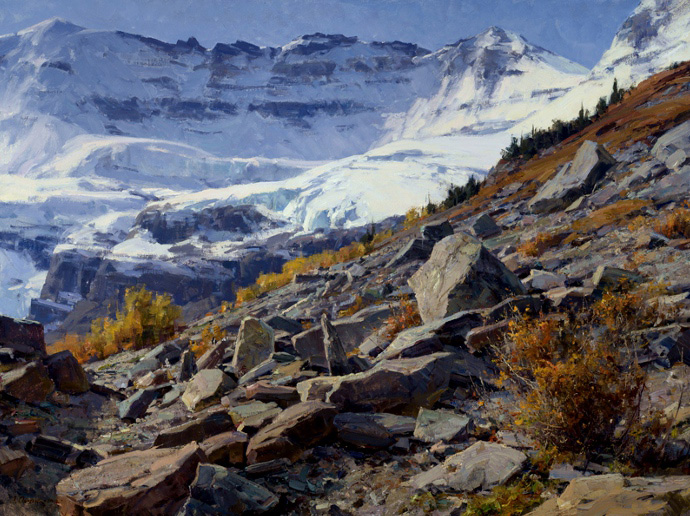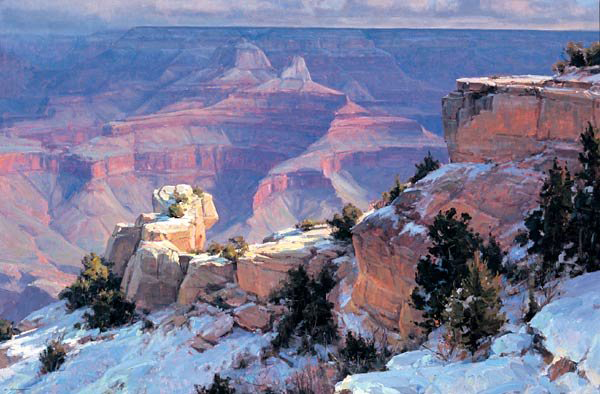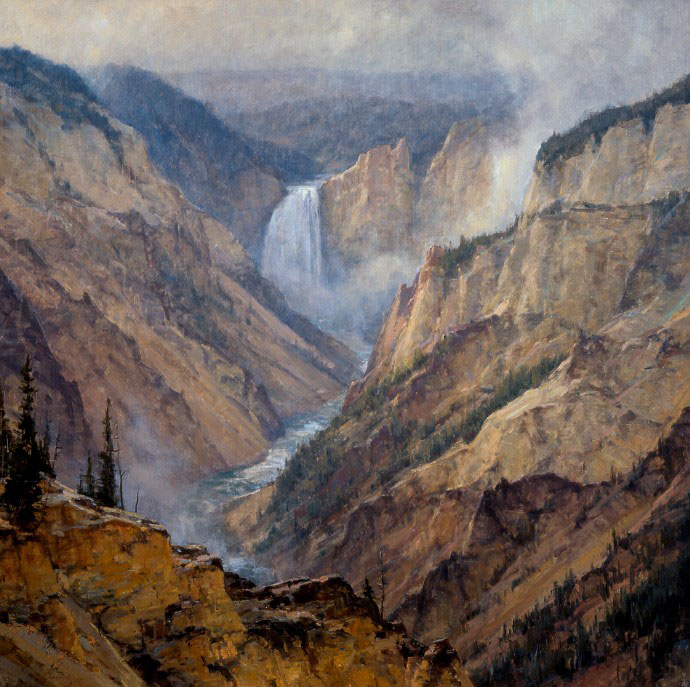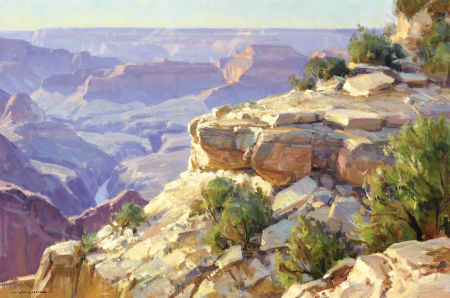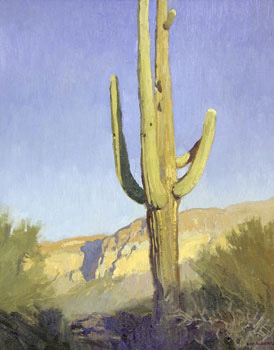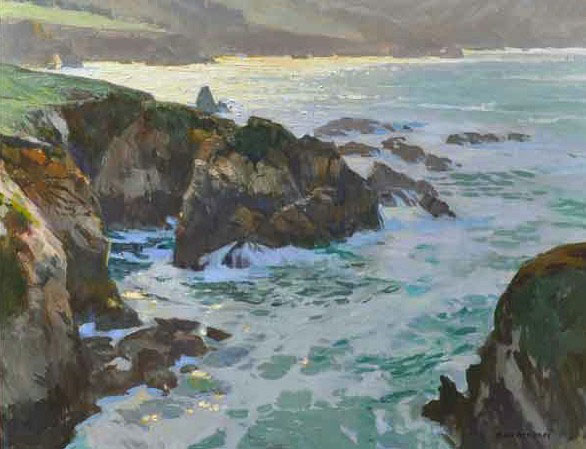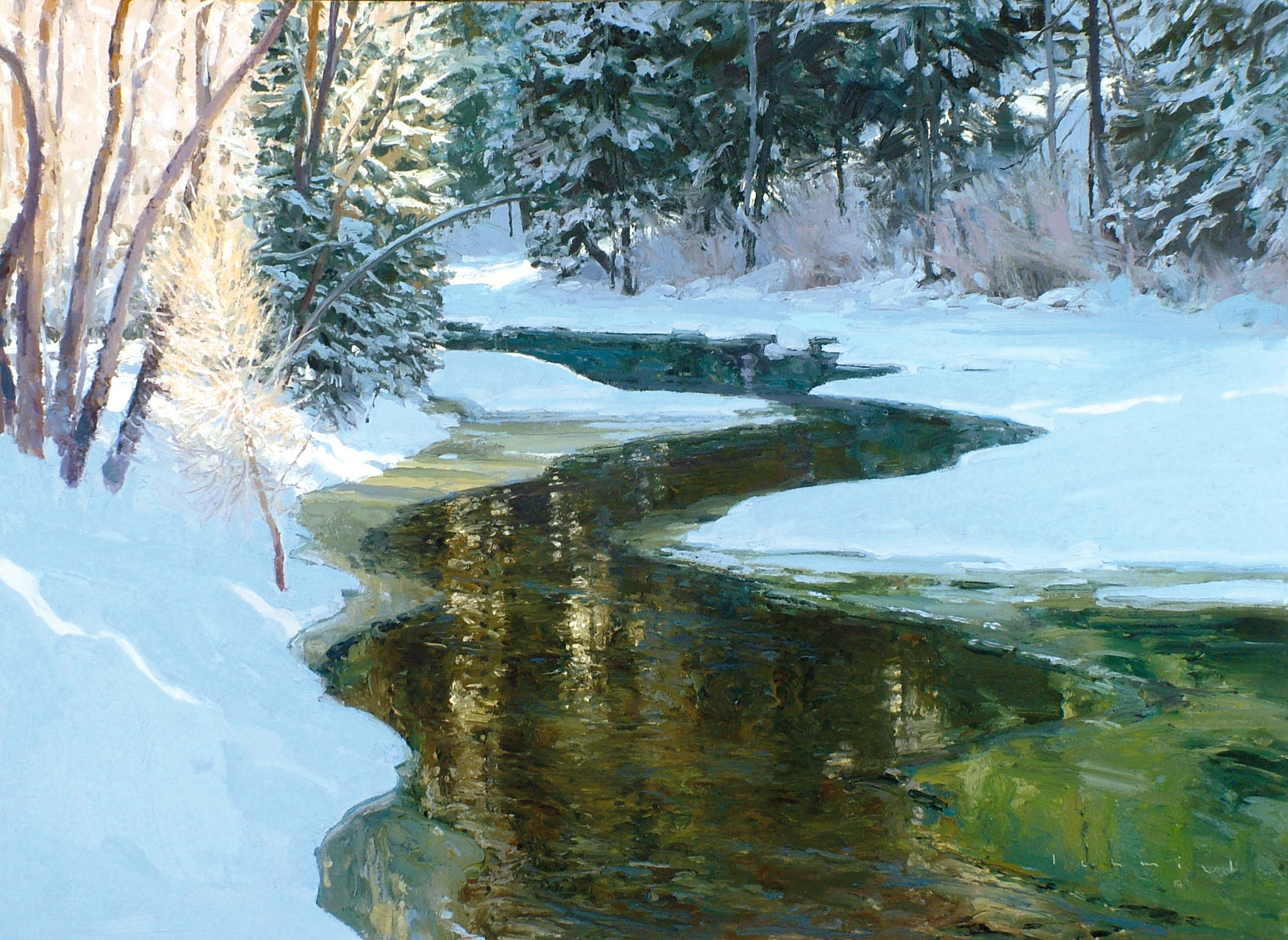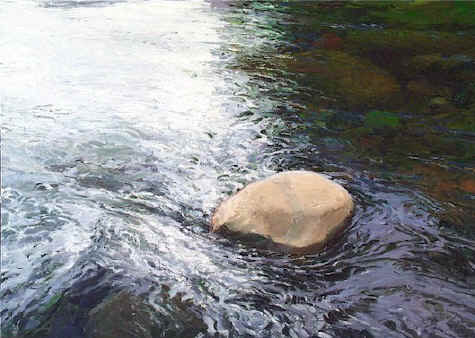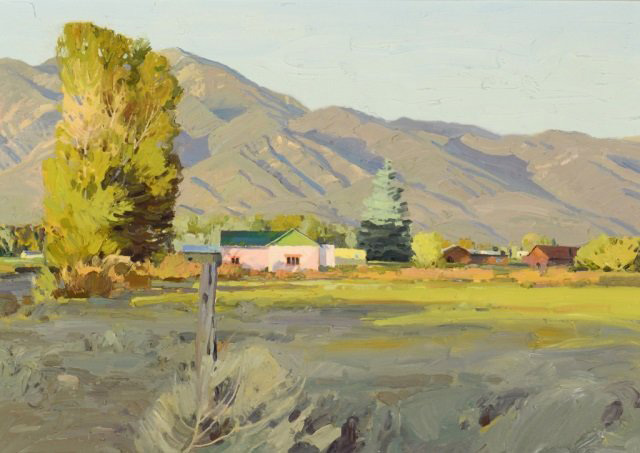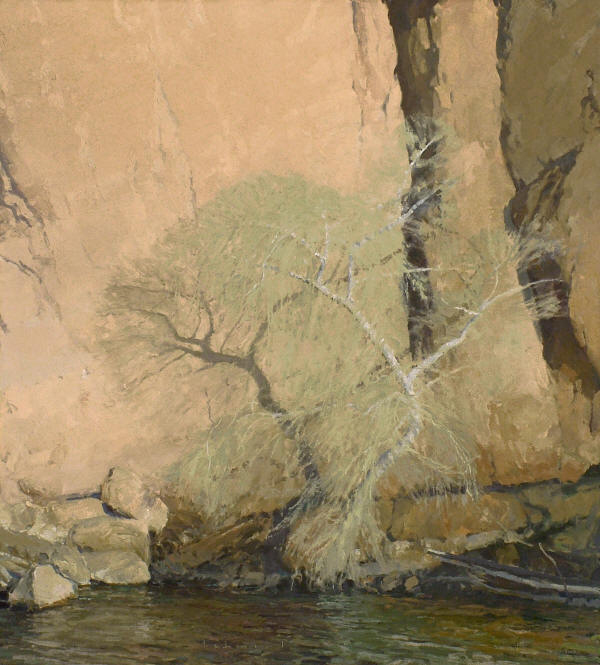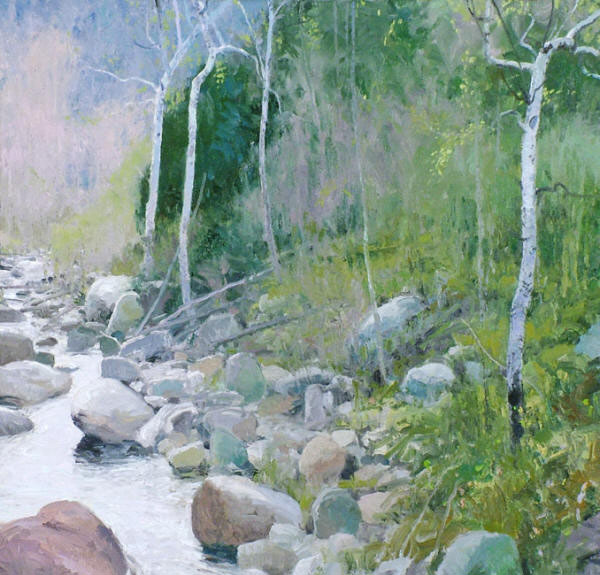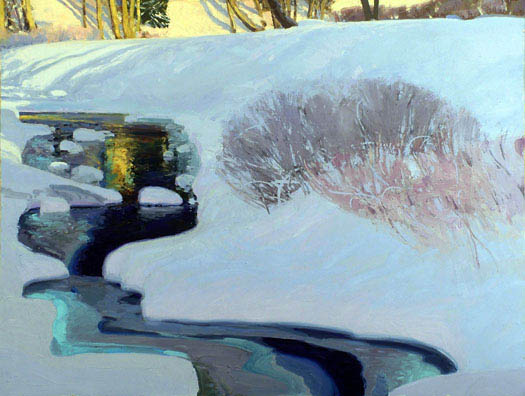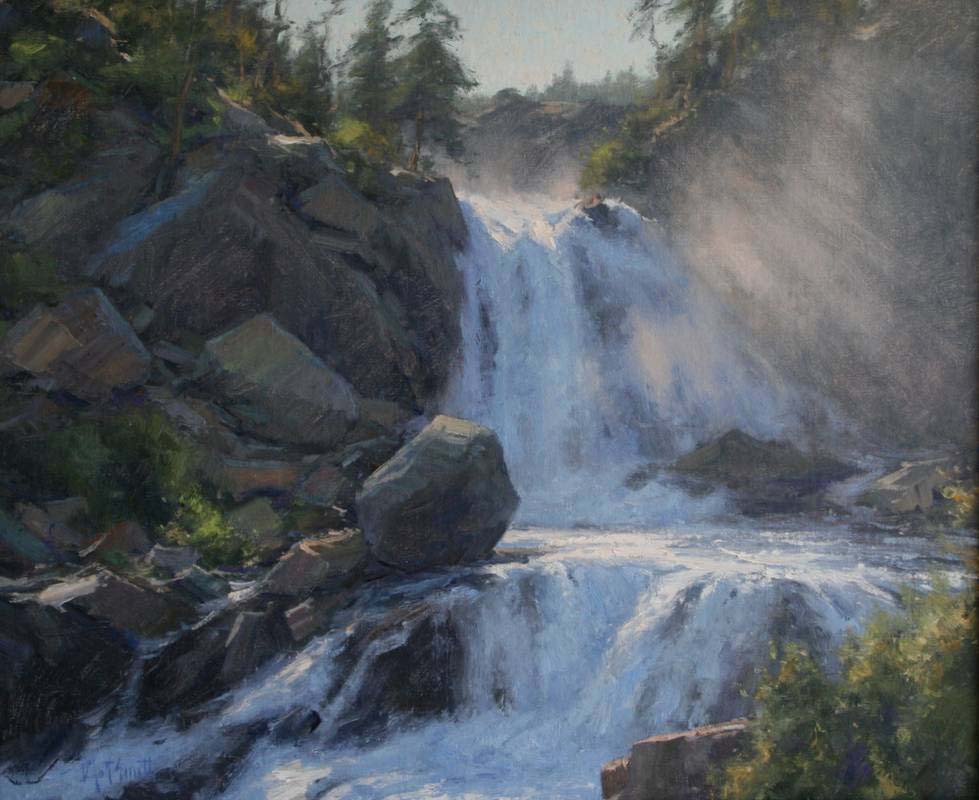This is a topic that I have been obsessed with for a little more than a decade, which is approximately the length of time that I have been painting the landscape myself. Who are the great landscape painters of the American West working today? And what can I learn from them?
I have studied the work of many great landscape painters; the French Impressionists, the Hudson River School painters, the California impressionists, the Russian landscape painters, the little-known landscape watercolors of John Singer Sargent, the landscapes of painters of the Southwest such as Carl Oscar Borg, Maynard Dixon, etc. But the majority of my time has been spent with the works of today’s living western landscape painters.
A word on style: my style preference is a point somewhere between realism and abstraction. Tightly painted works or works that are photo realistic may be technically superb but leave me unsatisfied artistically. Works that lean too far towards the abstract may be emotionally intense but often are lacking in competent drafting, values, colors, etc. I believe the balance to be somewhere in between tightly realistic and wildly abstract.
All this being said, it is my opinion (which may or may not be worth much) that some of the greatest living Western landscape painters of today are Clyde Aspevig (Montana), Ray Roberts (California), and Lem Chmiel (Colorado).
Let’s look at works by Clyde Aspevig first. No one does the landscape better than he does. He is a master at balancing detail with innuendo, putting in enough detail to transport you to what feels like a specific time and place, and yet leaving enough out to draw you into visual collaboration with him. I heard him lecture at the Scottsdale Artist’s School when I was just starting out as a painter. One of the reasons that his body of work is so excellent is that he has the discipline to turn finished paintings against the wall for 6 months and then look at them with fresh eyes before letting them out of his studio. I once drove from my home in Arizona to Santa Barbara to see an exhibit of his work at the Santa Barbara Museum of Natural History. Of the 29 paintings hanging in the exhibit, not one was bad. They were all either good or great. My husband and son (who went to the exhibit with me) had different favorite paintings than I did, but we all agreed that every painting was worthy of the wall space. I can’t say that about very many shows.
Lake Haiyaha by Clyde Aspevig
Aqua Music by Clyde Aspevig
Golden Willows by Clyde Aspevig
Beaver Pond by Clyde Aspevig
Canyon Lands by Clyde Aspevig
Alpine Lake by Clyde Aspevig
Thunderhead by Clyde Aspevig
The Headlands by Clyde Aspevig
Clyde Aspevig (Unknown Title)
Shades of Ice and Blue by Clyde Aspevig
Clyde Aspevig (Unknown Title)
Transitions by Clyde Aspevig
The Grand Canyon from Mather Point by Clyde Aspevig
Painting of Yellowstone falls by Clyde Aspevig (Unknown Title)
Water Lilies by Clyde Aspevig
Clyde Aspevig (Unknown Title)
Clyde Aspevig (Unknown Title)
Clyde Aspevig (Unknown Title)
Clyde Aspevig (Unknown Title)
The Joy of Winter by Clyde Aspevig
Clyde Aspevig (Unknown Title)
Storm at Freezeout Lake by Clyde Aspevig
Glacier Park Mtn. Henkel by Clyde Aspevig
Tumble Weeds by Clyde Aspevig
Clyde Aspevig (Unknown Title)
View at Telescope Peak by Clyde Aspevig
While Clyde Aspevig is amazingly versatile in subject matter, I believe that his very best landscapes are of mountain subject matter. This is not surprising for an artist living in Montana.
Next is Ray Roberts. I have posted some great works by him. I was privileged to take a week-long workshop with him at Scottsdale Artists School. I learned how he thinks about the landscape and how that understanding forms the framework that underlies his paintings. His strength comes from his understanding and manipulation of value. He taught me that “value does the work but color gets the credit.” His paintings begin with value drawings. He blocks in the shadows with a medium neutral color and leaves the white canvas to show through for the lights. Then as he begins to build his painting, he makes sure that all of the shadows stay close to each other in value and that likewise all of the lights stay close to each other in value. This “squeezing of the values” into light families and shadow families brings punch and drama to his work. See if you don’t agree.
Ray Roberts (Unknown Title)
Ray Roberts (Unknown Title)
Ray Roberts (Unknown Title)
Ray Roberts (Unknown Title)
Ray Roberts (Unknown Title)
Ray Roberts (Unknown Title)
Ray Roberts (Unknown Title)
Ray Roberts (Unknown Title)
Ray Roberts (Unknown Title)
Ray Roberts (Unknown Title)
Ray Roberts (Unknown Title)
Ray Roberts (Unknown Title)
Ray Roberts (Unknown Title)
Ray Roberts (Unknown Title)
Ray Roberts (Unknown Title)
Ray Roberts (Unknown Title)
Ray Roberts (Unknown Title)
Ray Roberts (Unknown Title)
Ray Roberts (Unknown Title)
Ray Roberts (Unknown Title)
Ray Roberts (Unknown Title)
Ray Roberts (Unknown Title)
Ray Roberts (Unknown Title)
Ray Roberts (Unknown Title)
Ray Roberts (Unknown Title)
Ray Roberts' greatest strength is undoubtedly in painting seascapes. If you recall, he is a California painter.
Len Chmiel; an authentic nature
Lem Chmiel is an acquired taste. It took me awhile to appreciate and enjoy his painting style because he is fairly minimalist and his composition is usually unconventional. Once you see enough of his work to understand the risks that he is taking with his compositions, it is thrilling, sort of like watching a high wire act at the circus. Will he fall or won’t he fall? And most of the time, at least in the works I have seen, he does not fall. But the balancing act is mesmerizing. If you haven’t read the wonderful new book about him, Len Chmiel: An Authentic Nature by Amy Scott and Jean Stern (published in 2012), get it and read it. His compositions are totally unlike anyone else. While I tend to like pretty much everything currently being painted by Clyde Aspevig and Ray Roberts, I do not like everything being painted by Lem Chmiel. I like the vast majority of his works, but in my estimation, some of them fail by being too chaotic. But having the guts to paint what he paints earns him extra points and puts him in my hall of fame.
Indications of Spring by Len Chmiel
Consider an Eagle's View by Len Chmiel
Rock Solid by Len Chmiel
Len Chmiel (Unknown Title)
Len Chmiel (Unknown Title)
Thin Air by Len Chmiel )
Len Chmiel (Unknown Title)
Fresh Start by Len Chmiel
Limelight, North Piney Creek by Len Chmiel
The Pink House in Ranchitos by Len Chmiel)
Len Chmiel (Unknown Title)
Glow in the Dark Canyon by Len Chmiel own Title)
Len Chmiel (Unknown Title)
Layers, Vermillion Cliffs by Len Chmiel
Len Chmiel (Unknown Title)
Len Chmiel (Unknown Title)
Slow Motion by Len Chmiel
Len Chmiel (Unknown Title)
Cliff Hanger by Len Chmiel
Hoar Frost Harmony by Len Chmiel
Len Chmiel (Unknown Title)
Len Chmiel is also pretty versatile in subject matter, but his all-time best paintings, in my opinion, are his snow and water scenes. He lives in Colorado, of course.
So the question is, which came first, the chicken or the egg? Did Aspevig, Roberts and Chmiel move so that they could live near the natural scenery they were most drawn to, or did they become best at what they most often saw?
As a side note, there are several other landscape painters who are also great painters: Matt Smith (Arizona), Josh Elliot (Montana), John Taft (Colorado), and Mark Haworth (Texas). I have posted a painting for each of them for comparison. These, and several others like Peter Holbrook, Arturo Chavez, Glen Dean and Kathryn Stats I hope to feature in future posts. This post has already grown beyond all reason!
Matt Smith (Unknown Title)
Josh Elliot (Unknown Title)
John Taft (Unknown Title)
Mark Haworth (Unknown Title)
So what have I learned from Aspevig, Roberts, and Chmiel? I have learned to have the discipline to edit my work with fresh eyes from Clyde Aspevig. From Ray Roberts I have learned to build the structure of my painting on values, and from Lem Chmiel I have learned to have the courage to try unusual compositions, to look at nature in unusual ways and attempt to capture that.
There is something else that I have learned from these exceptional landscape painters. The overarching reason that all of these painters are great is that they have no weaknesses. Michael Heywood, a good friend and a world-class graphic designer (now retired), has said it best. “A painting is only as strong as its weakest element.” Clyde Aspevig, Ray Roberts, and Lem Chmiel have no significant weaknesses. That doesn’t mean that every single painting is a home run, but it does mean that they are masters who have worked on every aspect of their art until they no longer have any problem areas.


